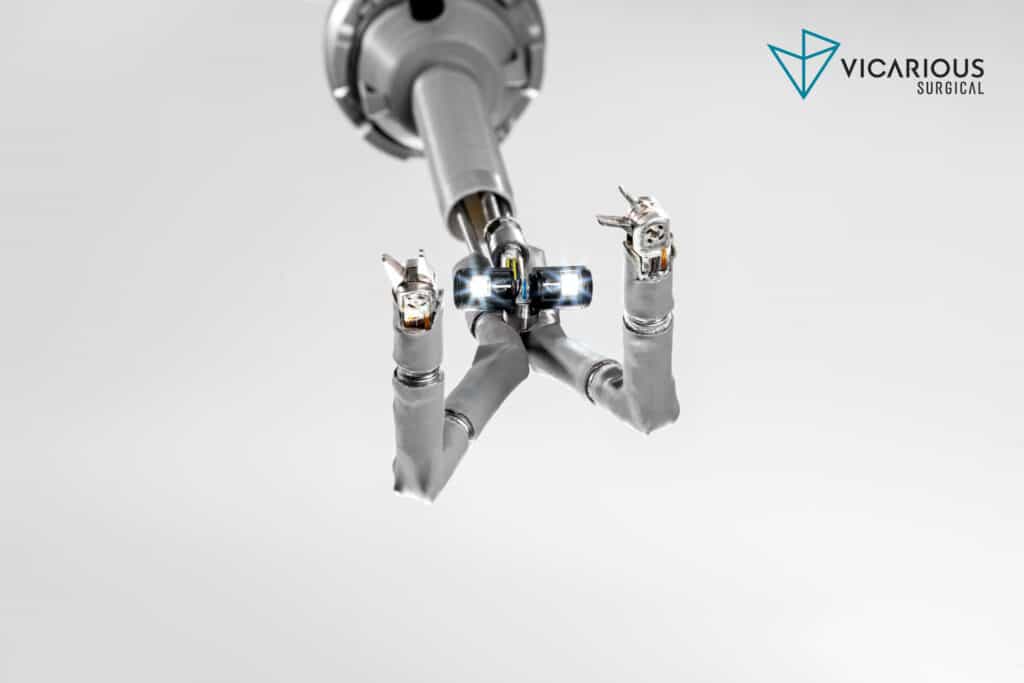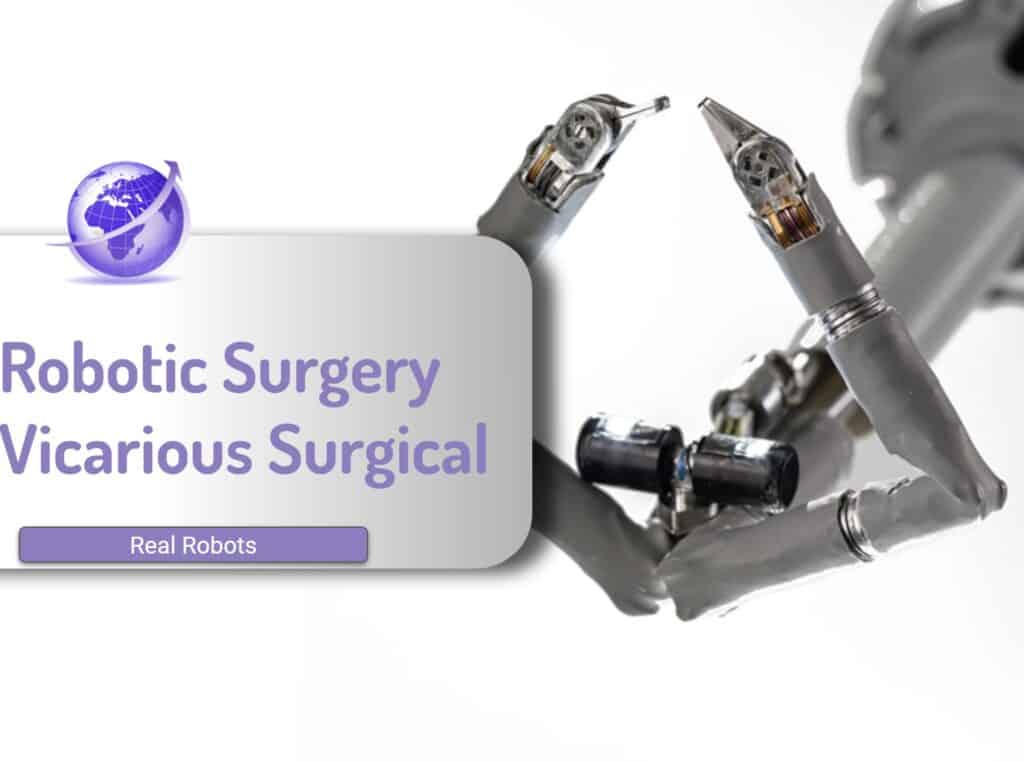The robotic surgery revolution is advancing and a podcast /YouTube by Matt Ferrel with Adam Sachs, CEO of Vicarious Surgical, highlights a quiet revolution coming to body surgery within the next few years. The Vicarious Surgical Robotic System is designed with a focus on abdominal access and visualization through a single 1.5mm port with both vision and 2 fully robotic arms.
All robotic surgery currently is robotised manual surgery. The cost is high and currently over 97% is done manually.
Ark Invest believe robotics will extend into all areas of life, and this is just one of the companies who will bring robots to every part of life.

What Does Robotic Surgery Revolution Look Like
- The robotic device looks like a praying mantis.
- 1 small 1.5mm incision Once inside camera can move aside to let other parts of the robotics go to work
- 2 cameras, with 9 degrees of freedom plus 4 about incension space, so can move around
- Small polymer cables enable to have
- The surgeon has an immersive experience, using stereoscopic, with 3D immersive VR like Headset but without a VR headset. It is designed to be similar to existing surgical robots such as da Vinci
- Full haptic feedback is not used as but motion fidelity drops off as the surgeon gets tired if they have to use force to move the system. They do need feedback for each event. It is not a 1 to 1 feedback. E.g. in suturing need feedback – need to know if too little or too much.
Protect the Patient
First and foremost is to protect the patient, and surgery is dependent on surgeons. Surgery relies on the surgeon to make no mistakes yet they do make errors. One bad day can have fatal consequences. Part of Vicarious design is to put software between the surgeon and the patient to prevent potential isses. That requires a range of other sensors such as lidar, fluorescence that the surgeon may not have access to.
The Inspiration and Problem in Surgery
In Fantastic Voyage / Inner Space movies, people are shrunk down to the right scale to go into the bloodstream. Humans are the wrong size. However, robotics can be shrunk down and the robot can work from the inside.
Surgeons are working from the outside in.
- Open wall surgery is still about 50% of the operations and over 20% of patients wind up with a complication and failure for the abdominal wall to heal correctly following the surgery
- Laparoscopic surgery. These are long slender sticks from the outside inside. Failure of abdominal wall is less, but it is still working from the outside it.
Manual surgeries account for 97% of all surgeries.
Surgery and Surgical Approval
The tools are at a stage for small clinical trials and will be filing at the end of 2024. The company has about 20 surgeons, It is a long and expensive regulatory framework for new medical devices.
Targeted approval is firstly for ventral wall Hernia repair. Surgeons use large incisions typically and surgery is layer by layer from the outside in. Vicarious is planning to do that with a small incision from the inside. Subsequent operations will include pelvic floor, hysterectomy and Bowel surgery.
Biggest Challenges with Robotics
- Engineering to get actuators to work
- Turning it into a product that surgeons can work
- FDA process
Existing Robotic Systems
Existing robotic systems utilise cable-driven motion coupling. Each joint is coupled with the next joint . Coupled motion builds up force on each joint. The problem is there is an exponential build-up of force. Force delivered 3 joints – 4 x force – like a wrist on the end of the stick. There are no elbows or shoulders
- Intuitive Surgical’s da Vinci Surgical System, is a multi-armed wonderbot and reduces errors and gives surgeons more precise control of their movements. The first robotic system FDA approved was the da Vinci Surgical System. The system has more than 8.5 million surgical procedures.
- Cyberknife, a robotic surgery system invented way back in the 1990s was the first and only fully robotic radiotherapy device It provides non-invasive radiation therapy to patients’ tumors across the U.S. with sub-millimeter precision.









